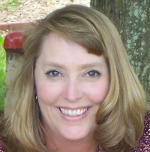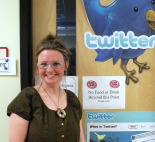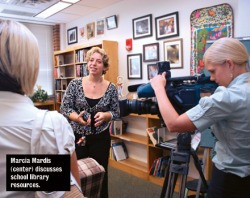The Summit boasts tech support in the form of two enthusiastic 2.0 mavens: Cathy Jo Nelson and Buffy Hamilton.

A 24-year veteran educator and teacher librarian from South Carolina, Nelson (@cathyjo) works at Dorman High School in Roebuck, SC. Her blog, "TechnoTuesday: Cathy Nelson's Professional Thoughts," was recently named one of the Top 20 Teacher Blogs by Scholastic's Instructor Magazine.

In her 18th year as an educator, Hamilton (@buffyjhamilton) has worked primarily as a technology specialist, 9-12 English teacher, and now is a high school librarian in the Cherokee County School District. She blogs at The Unquiet Librarian.
As we prepped for the event, I asked them for some insight, 2.0 wise:
What is your absolute favorite application? And your tech/2.0 fascination of the moment?
Hamilton: Google Reader is probably my most powerful application—it allows me to pull and organize RSS feeds from my favorite information sources, whether it be blog feeds, journal feeds, podcast feeds, or even Twitter streams; I also love the sharing feature for finding additional resources and readings. Twitter, though, is a very close second - it was my entry point into cultivating a personal learning network. My 2.0 fascination would have to be ways I can help my students use social media for accessing, organizing, managing, and sharing information; I am also intrigued by mashups and tools for sharing citations like Zotero and CiteULike.
Nelson: It is hard to nail down a single tool I am most fascinated with! Right now I am finding blogs (my own and the ones I follow) occupying the little free time I have. But they are very rewarding in stretching my thinking and helping me grow as a professional.
Any advice to those new to 2.O apps?
Hamilton: My advice to is pick one tool and get comfortable with it - don't feel like you have to master every application out there in a short time. I found that once I mastered one tool, it became increasingly easier to learn additional applications; once you learn a few key ones, you'll see how easily you can integrate those tools together. As you develop a personal learning network, you'll also find many people who are willing to share their expertise and knowledge to help you learn the mechanics and educational applications of these tools.
Nelson: For newbies, I must say jump in. The best way to grasp the tools is to get in them, and feel your way around. It will not take long to develop an understanding and also decide which ones you like. There will be many like-minded people there who were all once new as well and will offer to guide you along.
— Kathy Ishizuka (@kishizuka)

 RSS Feed
RSS Feed